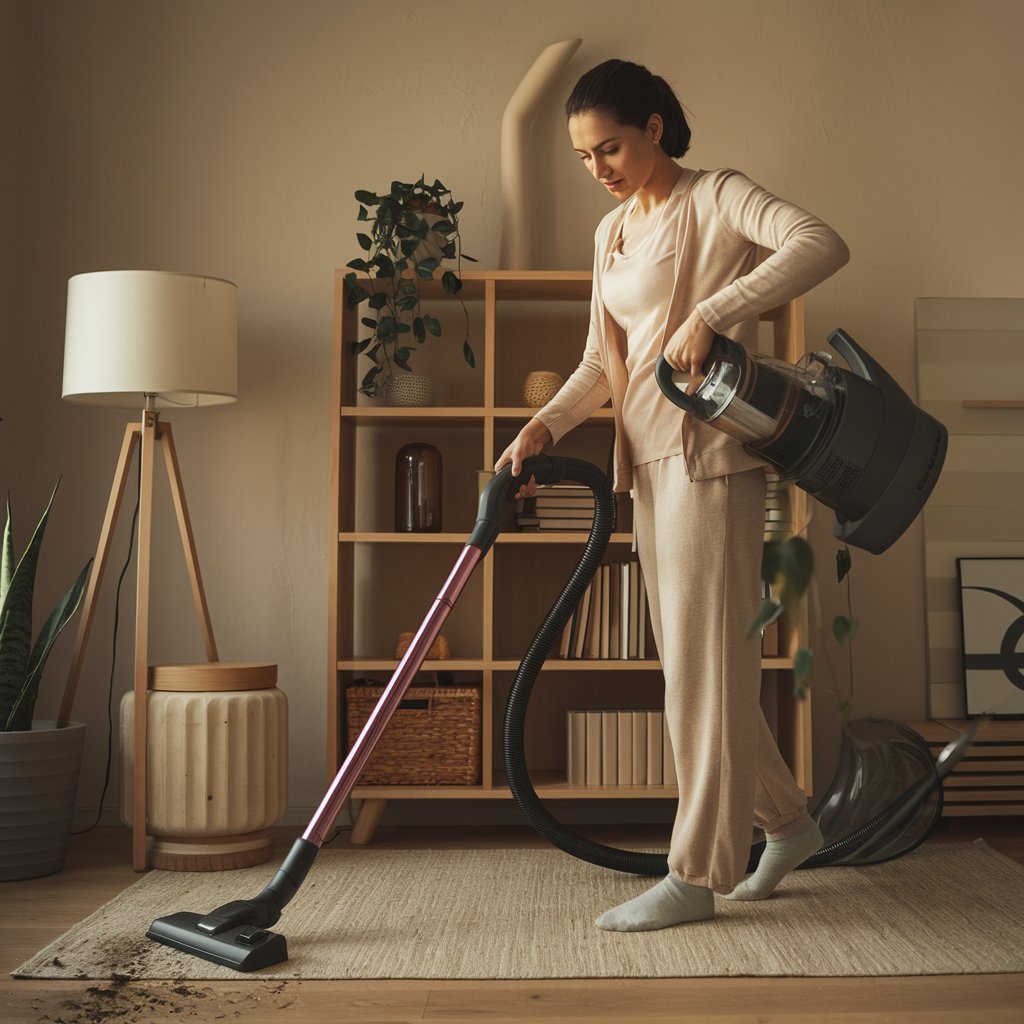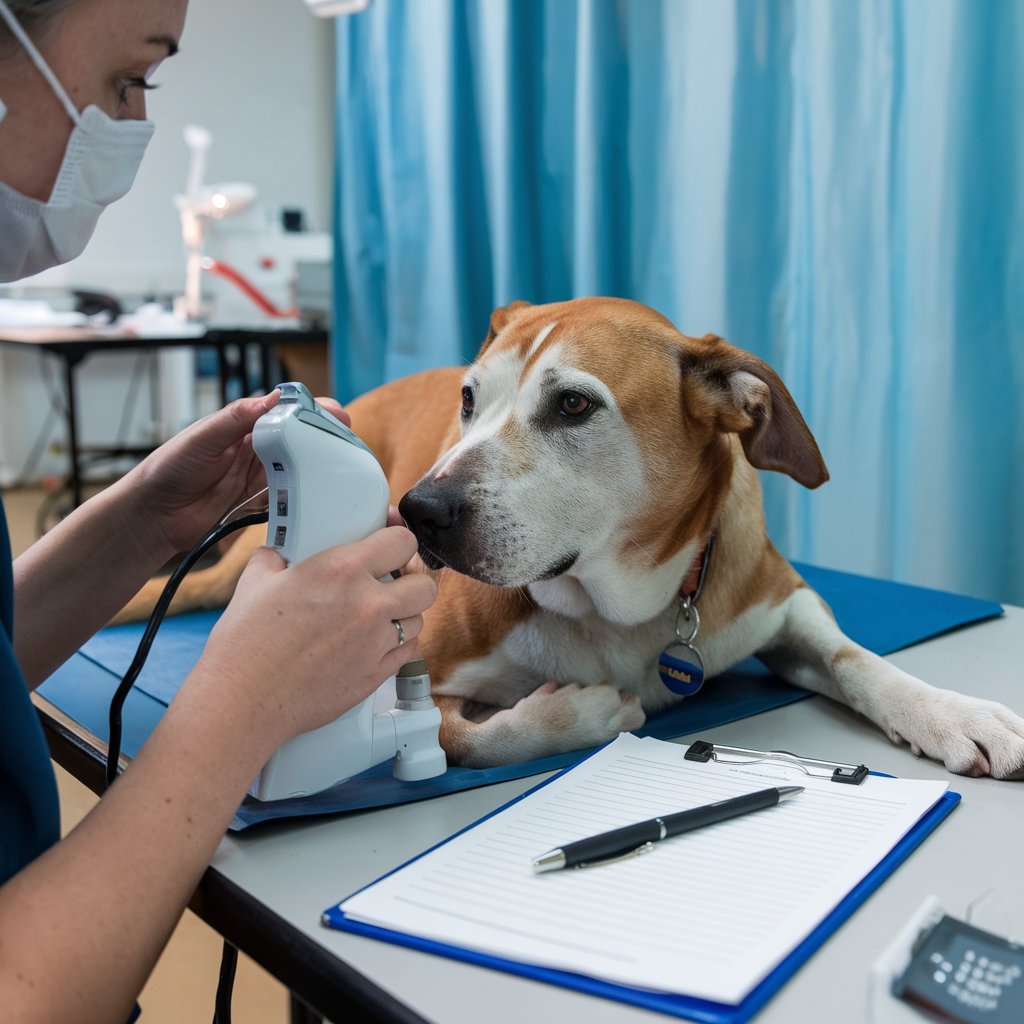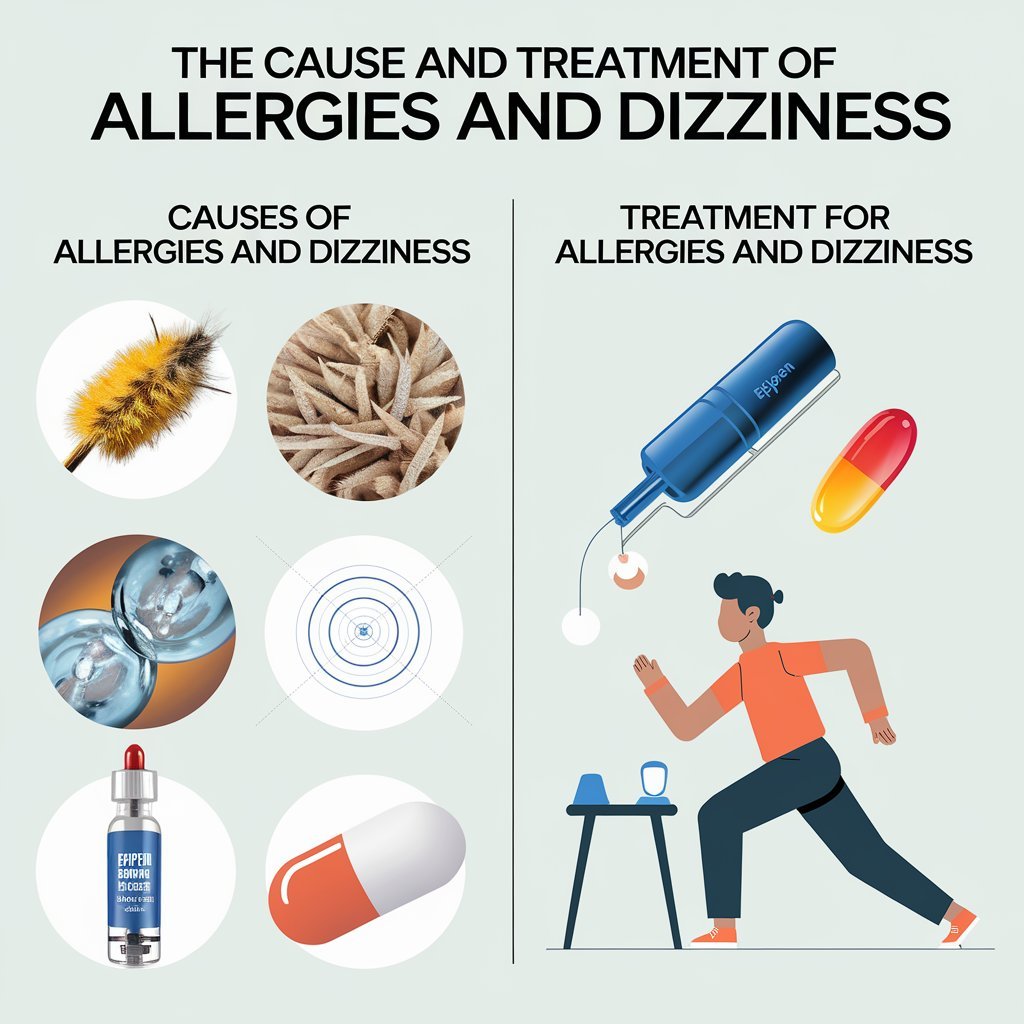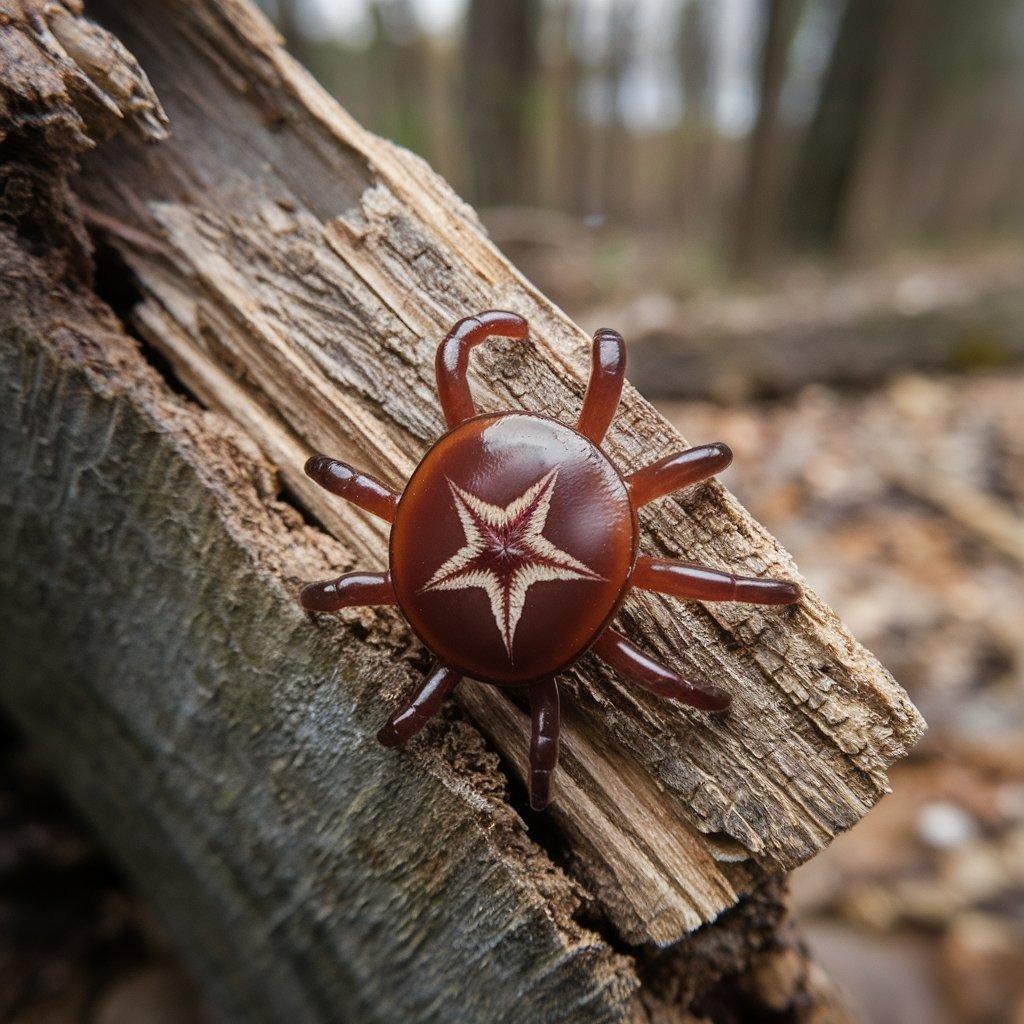Dust mites can exacerbate symptoms in indoor allergy sufferers. Some common practices to eliminate dust mites are washing and replacing bedding regularly, removing dust, and maintaining low humidity in your home.
Dust mites do not cause allergic reactions by direct contact, such as a bite. They are an allergen because their waste products, like feces, are left in dust.
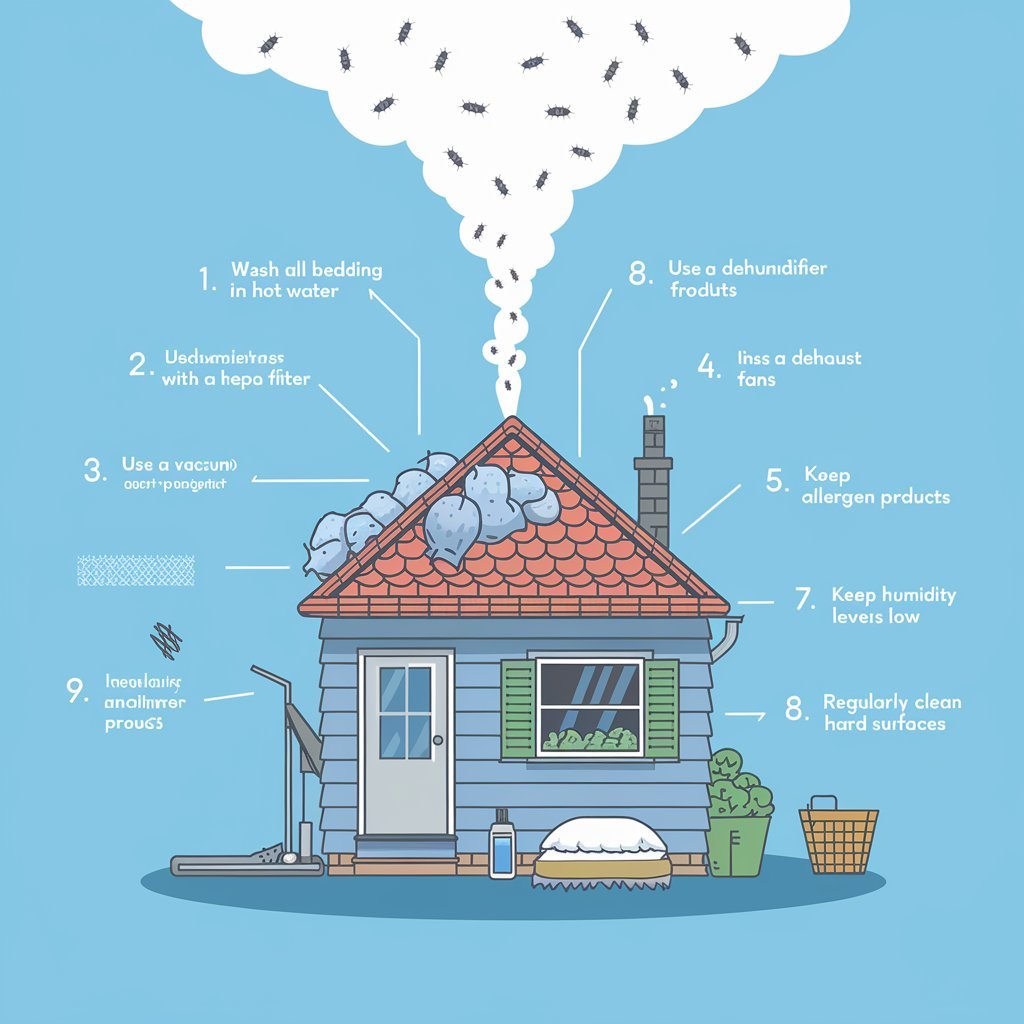
These microscopic pests can cause allergy flares if you sit on a couch or rest in bed. Read more to learn how to get rid of dust mites and reduce allergy symptoms.
What Are Dust Mites?
Dust mites are small insects-like pests that are usually found in house dust. They prefer eating flakes of dead skin, or dander, that people and pets shed. Dust mites are also related to allergies and asthma.
Technically, dust mites can live anywhere with dust. They are usually found in the following places:
- Bedding
- Carpeting
- Curtains
- Mattresses
- Up-holstered furniture
Allergy Symptoms
Dust mites do not provoke allergic reactions due to bites or stings. The reactions result from inhaling proteins from dust mite feces or urine and decaying dust mite bodies.
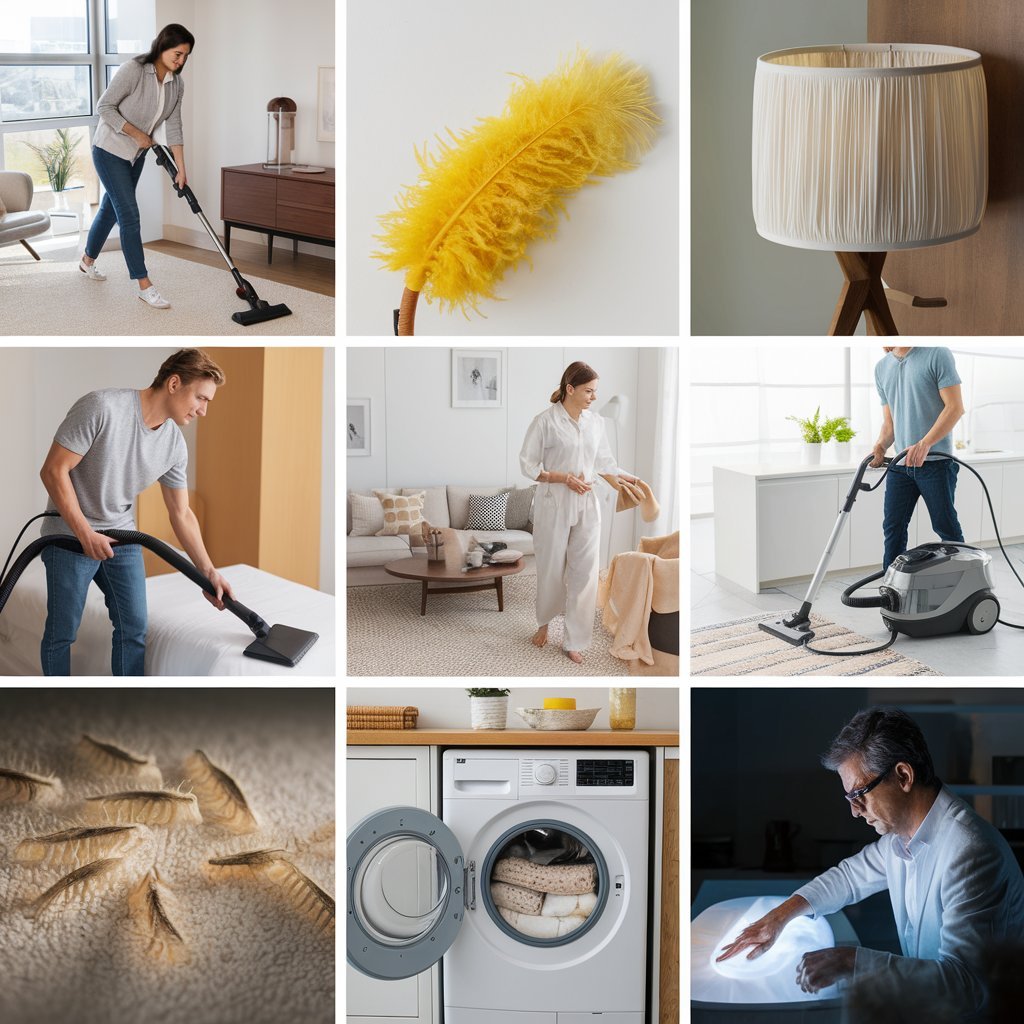
Dust mites probably will not cause any problems if you are not allergic to them. They can trigger an allergic reaction and worsen allergies and asthma symptoms in some people.
Allergy symptoms can include:
- Itching
- Rashes
- Runny nose
- Sneezing
- Swelling
How to Get Rid of Dust Mites
It is impossible to completely remove dust mites. They can easily find their way into almost all homes: About 80% of U.S. homes have at least one bed with dust mite allergens.
Getting rid of dust mites is not a treatment you do once and forget. It comes back, hence the need for regularly cleaning. If after these tips and you still go through allergy, you should see an allergist. They can even learn more about your allergies and find available treatment.
1. Buy Toys You Can Easily Wash
Soft toys can harbor dust mites.If children play with the soft toys, one should consider limiting the toys that are washer-and-dryer friendly
2. Choose New Bedding
You can wash your bedding regularly, but some may be impossible to keep dust mite-free. Duvet covers are often too big and lumpy to clean. You may want to replace a duvet cover with a blanket or quilt that can be washed.
Bed skirts, throw pillows, and throw blankets are other decorative bedding that offer places for dust mites to settle. You may not want to use these when making your bed.
3. Keep Low Humidity
The place with high humid environment is such as a steamed bathroom which dust mites like. Reduce the humidity indoors to below 50%.A dehumidifier or an air conditioner keeps humidity inside the home low. A hygrometer can be purchased to check on humidity level
4. Remove carpeting
Carpel is a good breeding ground for dust mites. Carpet tends to catch and trap flakes of dead skin cells. Wall-to-wall carpeting attracts dust mites and is especially hard to clean.6 Replace wall-to-wall carpeting with hard surface floors, including tile or wood.

5. Allergen-Proof Mattress and Pillow Covers
Allergen-proof covers can save your mattress and pillows from a dust mite infestation.5 Covers with zippers keep them tightly shut around your bedding and trap dust mites and prevent them from multiplying. The dust mites inside the covers will eventually die, and others will be unable to enter.
It’s still important to clean your bedding if you have allergen-proof dust covers. Be sure to wash your covers regularly
6. Use a Damp Cloth To Remove Dust
Clean your house using a damp cloth. It can remove dust effectively since it prevents the dust from going airborne and settling in another place. Wet your cloth with water or disinfectant. Throw dirty clothes into the washer or shake out the collected dust outside your house.
7. Vacuum Often
Vacuum your carpet and upholstered furniture regularly to remove dust. Use double-layered microfilter bags or high-efficiency particulate air (HEPA) filters in your vacuum to efficiently clean the dust off your carpet and upholstered furniture. Consider replacing your upholstered furniture, which attracts dust mites, with washable covers.
This does not make an effective way to remove dust; however, vacuuming may minimize the effects of dust allergy symptoms. If it intensifies symptoms, you might forego this measure.
8. Wash Your Bedding
Bedding is the favorite place of dust mites. You shed flakes of dead skin on your bedding, which dust mites use as food. It’s important to change and wash your bedding frequently.
One of the best ways to eliminate dust mites is to wash all bedding coverings, such as sheets, blankets, pillowcases, and duvet covers. Wash these items on a hot cycle of at least 130 degrees. If this is not possible, put it in the dryer for 15 minutes at 130 degrees.
You can also freeze any items that cannot be washed and dried for 24 hours. Freezing your bedding will not remove the allergens, but it kills dust mites.
